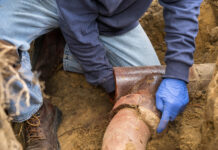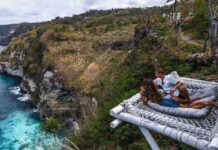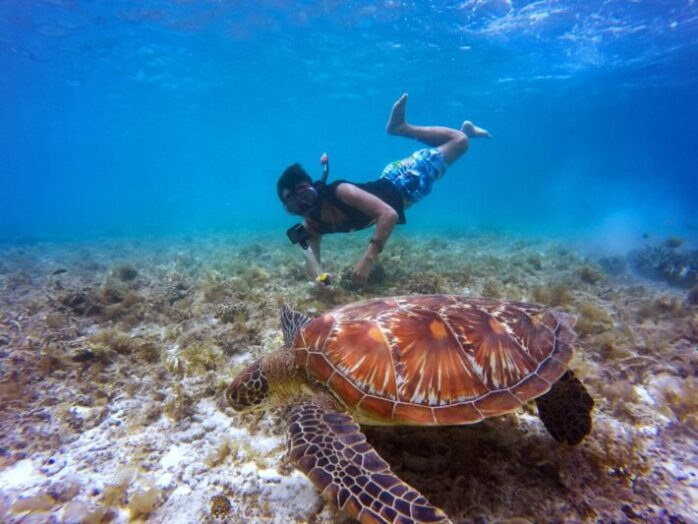
With a vibrant culture and a tropical climate, it’s no surprise that Americans flock to spend their vacations in Cancun. Since it’s located in the Gulf of Mexico, the waters here are more sheltered and have gentler currents. Cancun’s beaches are well-known for their beauty, but there’s a whole other world beneath the surface that’s just as spectacular.
The Mesoamerican Barrier Reef, the second largest barrier reef after the Great Barrier Reef in Australia, runs parallel to Mexico’s Caribbean coast. The reef begins in Isla Contoy on the northern tip of the Yucatan Peninsula and runs nearly 700 miles south along the coast to the Bay Islands in Honduras.
It goes without saying that Cancun has many fantastic snorkeling spots where you can see a variety of marine life, including colorful coral and sea turtles. You’ll also not want to miss out on the mangroves and freshwater cenotes.
Snorkeling doesn’t require prior training or exceptional swimming skills, making it a great way to explore and learn more about marine life while enjoying your vacation.
Here are our picks for the seven best snorkeling spots in Cancun.
1. MUSA – Cancun’s Underwater Museum
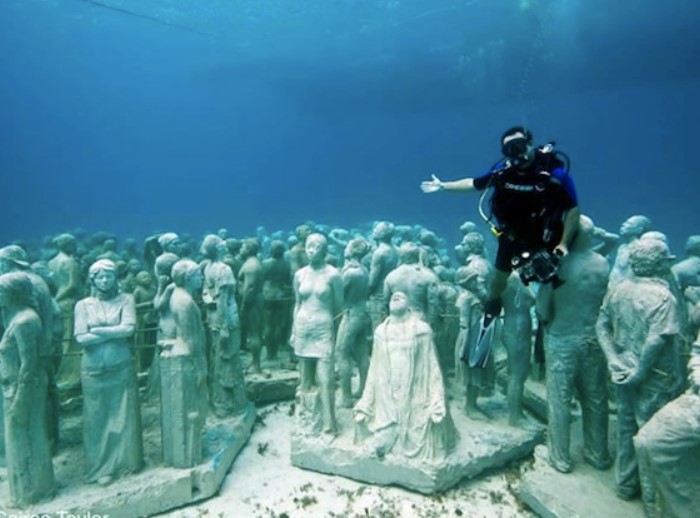
As far as snorkeling goes, this is one of the best places to visit in the world. MUSA is a multi-year project that began in 2009. The underwater museum was made by submerging 500 full-size sculptures, and more are added every year.
The brainchild of Jaime Gonzalez Canto, who created it with the help of British sculptor Jason deCaires Taylor, MUSA is an incredible sight and the largest museum of its kind in the world. Its goal is to protect the local reefs but providing a dedicated diving area for tourists.
The sculptures were made from pH-neutral marine concrete and were then anchored into the ocean floor, making it an environmentally friendly museum. With time, the sculptures become home to various plant and animal species, integrating into the aquatic environment.
If you only have time to snorkel at one location, this should be it. You can book a CancunSnorkeling.com tour that will take you to see not only the sculptures but anything from turtles to rays.
2. Punta Nizuc
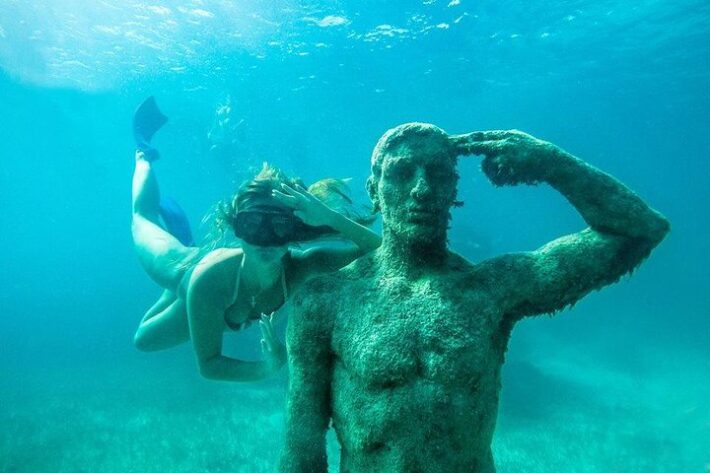
Punta Nizuc is another great snorkeling spot located on the southern end of the Cancun hotel zone. It has a floating platform you can use to launch yourself into your snorkeling adventure, so you don’t have to swim there.
The waters here, like those in the rest of Cancun, are calm, warm, clear, and full of marine life – perfect for snorkeling. This area is home to 37 different varieties of coral, 230 types of flora, 100 fish species, and four turtle species.
You’ll also see 16 sculptures such as The Last Supper, The Gardener of Hope, and Time Bomb from British sculptor Jason deCaires Taylor and Icebreaker, Understanding, and Threshold from Cuban sculptor Elier Amado Gil. There are also tours available in this area, and most travelers reach by speedboat shuttle.
3. Cozumel
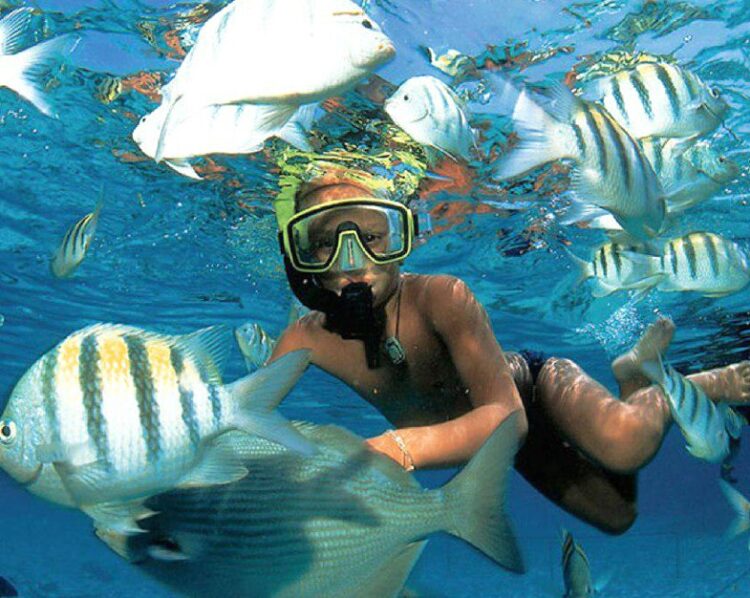
Cozumel is a small island off the coast of Cancun. It has some of the most beautiful beaches you’ve ever seen and a lot of tourist stands, making it an excellent shopping destination. But you’re here to read about snorkeling, so rest assured that you’ll also find a variety of beautiful tropical fish in this region.
In Cozumel there is no need to use a boat. You can snorkel right from the beach. The spectacular coral structures can be seen even in shallow waters, making this an excellent snorkeling spot for novices and expert snorkelers alike. The natural gardens that can be seen in these colorful and vibrant reefs can be found all around the coastline of this small island, and they are breathtaking.
4. Isla Mujeres
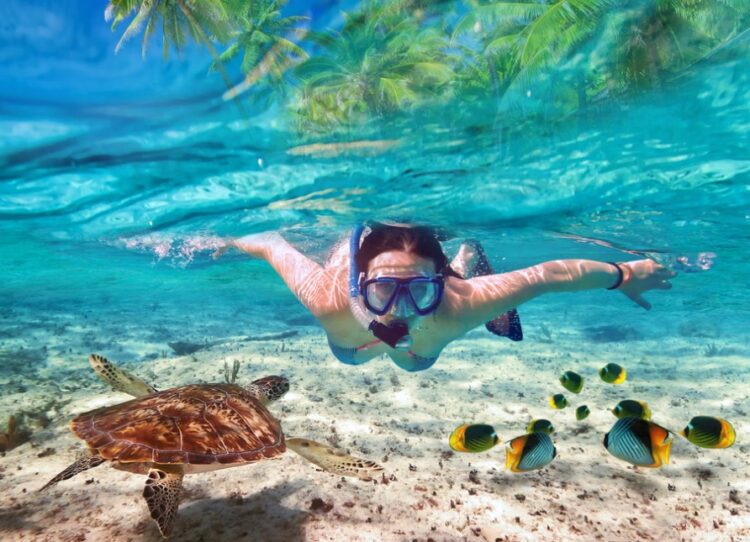
Isla Mujeres is best known for its turtles and sharks. It’s located across the bay from Cancun, so you need to take a boat to get there. However, this only means that you will spend the entire day discovering this wonderland.
The beaches are perfect, with white sand and plenty of space for the whole family. It’s only 5 miles long and a half-mile wide, so you can spend an entire day exploring it. This place has more to offer than just snorkeling. For example, you could visit the ruins of Pirate Mundaca’s hacienda.
Pirate Mundaca lived in the 19th century. The story goes that he fell in love with a local woman called La Trigueña, which translates to The Brunette. He built this hacienda with gardens and beautiful archways in the hopes that this would help him win her over.
Unfortunately, she married another man from the island before the hacienda was finished.
There are also snorkeling tours to Isla Mujeres. You’ll get to see whale sharks, giant rays, turtles, and colorful fish.
5. Akumal
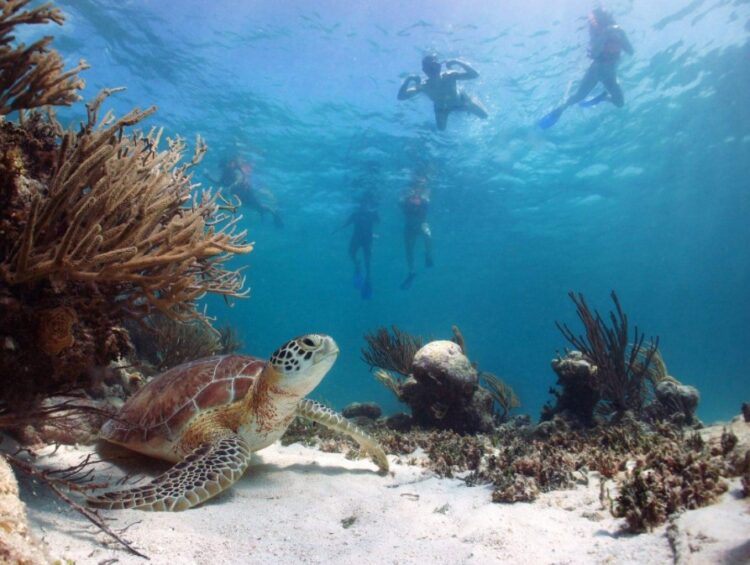
Akumal has everything you need for a great day trip: restaurants, snack bars, even supermarkets. Plus, it’s a good spot for beginner snorkelers and kids. There are two areas for snorkeling, and both have calm, clear waters. One is between 3 and 7 feet deep and stretches for about 10 yards. Here you’ll see turtles and rays. The second one has more coral than turtles, a larger area, and it’s between 3 and 20 feet deep.
6. Tulum
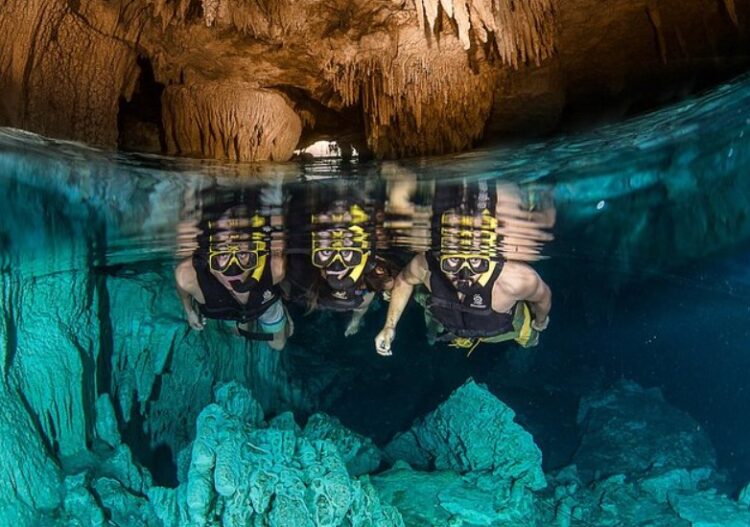
Tulum is the place to go if you want to get the most out of your snorkeling experience. Stunning Mayan ruins perched on cliffs? Check. Gorgeous reefs? Check. The thrill of swimming through a beautiful cenote? You bet!
This is the kind of snorkeling spot where you’ll really get the most out of your underwater camera. There are just so many colors! Bright purple sea fans, parrotfish, and butterflyfish. Plus, there are barracuda, stingrays, spotted eagle rays, and turtles. Who would want to miss out on that?
7. Isla Contoy
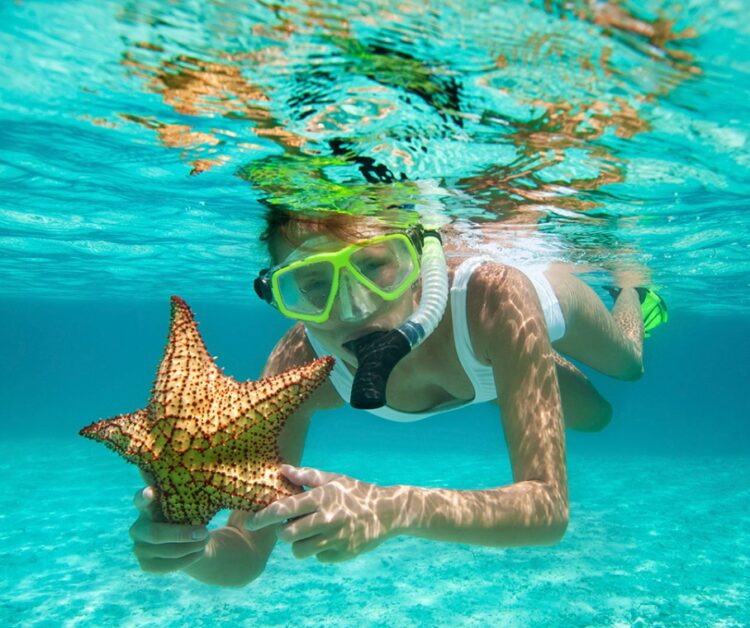
The water in Isla Contoy doesn’t go deeper than 9 feet, but you’ll still have a lot to see, like coral, queen conch, and sea turtles. Isla Contoy is an untouched natural wonder that is especially popular with bird lovers since it’s home to more than 150 tropical bird species.
If you’re also interested, you’ll want to get here early. The island was declared a National Park in 1998, and it’s protected by the Mexican government, which means that they limit the number of visitors in order to protect the wildlife.


